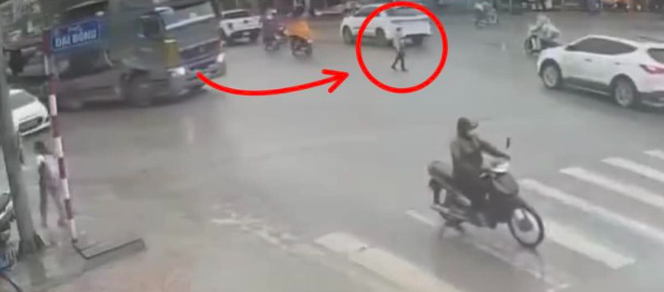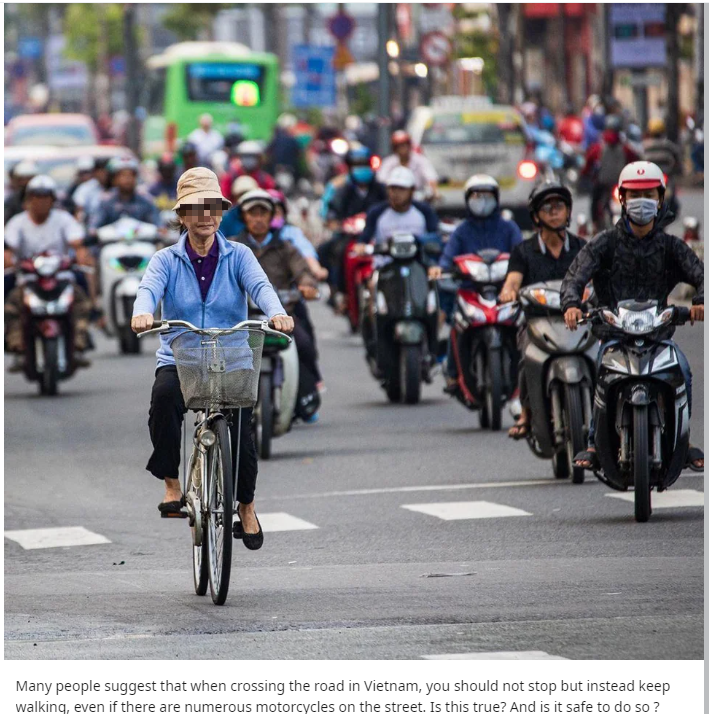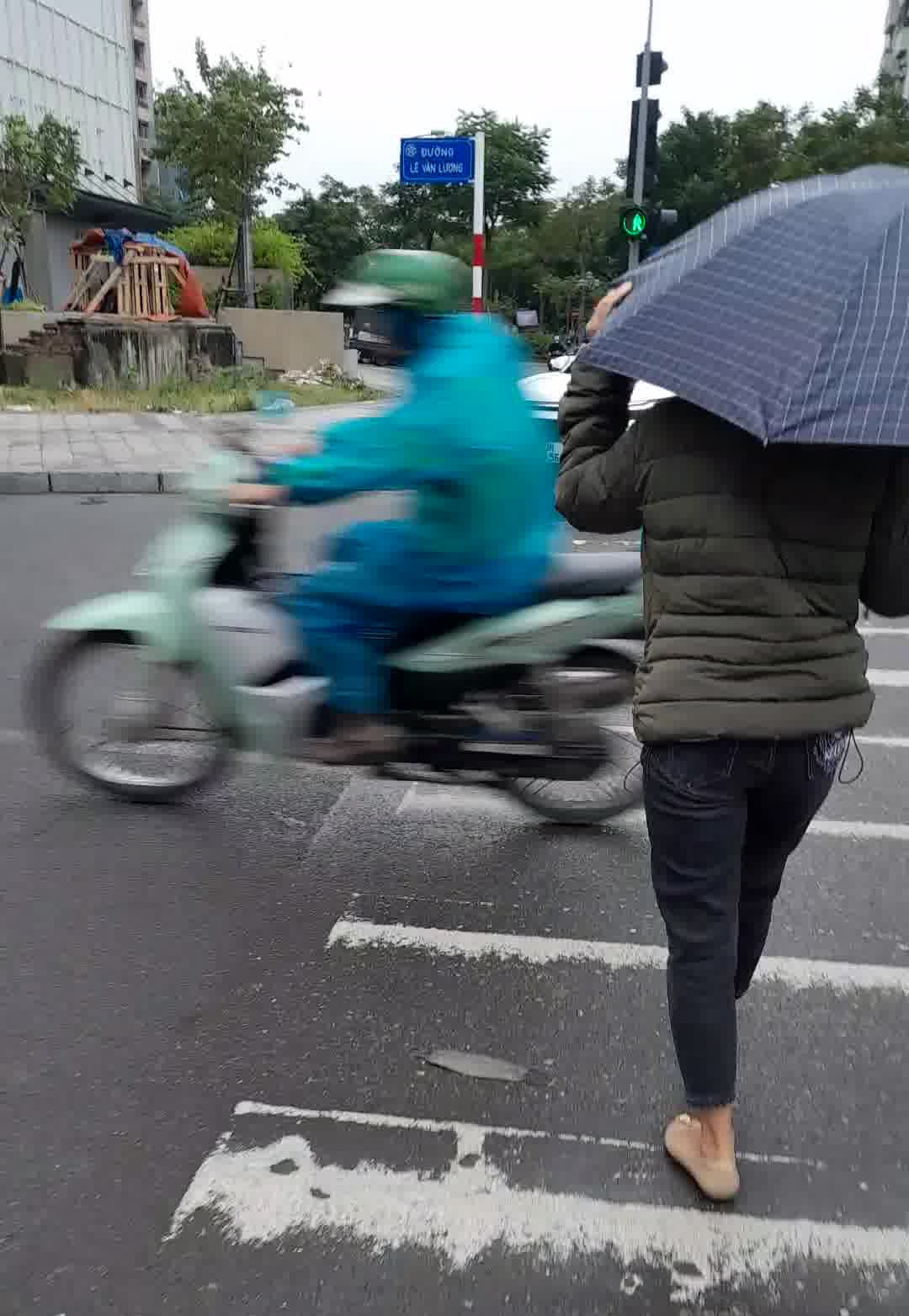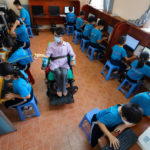Tuan Lan, a reader, has recently shared their views with Tuoi Tre (Youth) newspaper about the issue of yielding to pedestrians in Vietnam.
Even experienced drivers often commit this common violation — either failing to yield to pedestrians or mistakenly assuming they have done so when they have not.
In mid-January, a shocking traffic accident occurred in Dai Nghia Town, My Duc District, Hanoi, bringing attention to the frequent occurrence of such tragic situations in Vietnam.
A pedestrian crossed the street in an area where there were no crosswalks, while a truck made a turn at what seemed to be an excessive speed and without paying proper attention. The pedestrian tragically died at the scene.
While the investigation into this particular case is ongoing, controversy has arisen regarding whether or not drivers should yield to pedestrians crossing the street outside of designated crosswalks.
Some argue that the responsibility lies solely with the pedestrian who entered the driver’s blind spot and crossed the street incorrectly.
Others believe that drivers should only yield to pedestrians within designated areas.
However, I disagree with this perspective for two reasons.
|
CCTV footage captures a traffic accident involving a truck and a pedestrian in My Duc District, Hanoi, January 2024. Photo: Supplied |
The 2008 [currently effective] road traffic law clearly states that “in the presence of crosswalks, drivers are required to carefully observe, reduce speed, and yield to pedestrians and disabled individuals in wheelchairs crossing the street.”
According to the law, “in areas lacking crosswalks, drivers must remain vigilant, and when they notice pedestrians or disabled individuals in wheelchairs crossing the street, they are obligated to slow down and yield, ensuring safety for the pedestrians and wheelchair users.”
Therefore, regardless of whether the pedestrian is in the right or not, the driver must consistently observe and yield to them.
The second issue, which often goes unnoticed, is the apparent absence of a genuine concept of pedestrian right-of-way in Vietnam, even when pedestrians are following the correct path.
As a frequent bus commuter and pedestrian, I often experience this phenomenon.
Even when I use crosswalks with pedestrian signals, crossing the road still feels like a risky bet with my life.
I find myself glancing sideways, signaling with my hand, and adapting to traffic conditions rather than relying solely on traffic signals.
|
A confused individual posts a question on Reddit seeking advice on how to cross the street in Vietnam. Photo: Screenshot |
What causes me to behave this way?
Several situations illustrate the challenges pedestrians face:
– At red lights, some cars park directly on the crosswalk, forcing me to cross the unmarked road and unexpectedly become a rule breaker.
– While most cars stop at red lights, many try to proceed, especially when the green light transitions to red, and some vehicles intentionally run the red lights.
– When making turns, vehicles rarely yield to pedestrians. If I casually cross the street according to the traffic signal, there’s a risk of getting hit.
There are times when I have to pause and wait for the traffic to subside. As I continue walking, the pedestrian signal turns red, and the vehicles start moving again. Once again, I find myself labeled as a rule breaker.
If drivers consistently yielded the right of way, pedestrians like me would not be forced into this hesitant role.
So, what does it mean to yield to pedestrians?
It involves actively slowing down and observing when approaching crosswalks, regardless of whether individuals are crossing or not.
The driver’s responsibility starts as soon as they spot the crosswalk, not necessarily when they see pedestrians.
Unlike pedestrians who move, crosswalks remain stationary, visible from a distance, and should not be used as an excuse for blind spots.
When a person is seen crossing or intending to cross the street, the driver should come to a complete stop, instead of maneuvering around and assuming that constitutes yielding.
Even on roads without clear crosswalks, drivers must remain vigilant and anticipate pedestrians crossing.
|
Vehicles advance in front of a pedestrian despite a green pedestrian signal in Vietnam. Photo: Thanh Linh / Tuoi Tre |
During my first trip abroad, out of habit, I preemptively yielded to approaching cars (in situations without traffic lights or crosswalks, as cars typically turned right).
To my surprise, they stopped.
Initially perplexed, I continued to wait for one of the cars to pass, but it remained stationary.
Neither that car nor the ones behind honked to signal my movement.
It wasn’t until I began crossing the street that they resumed driving.
I realized then that this was a genuine practice of yielding to pedestrians.
If all drivers in Vietnam adopted this approach, I believe tragic situations like the traffic accident in My Duc District would be significantly reduced.











